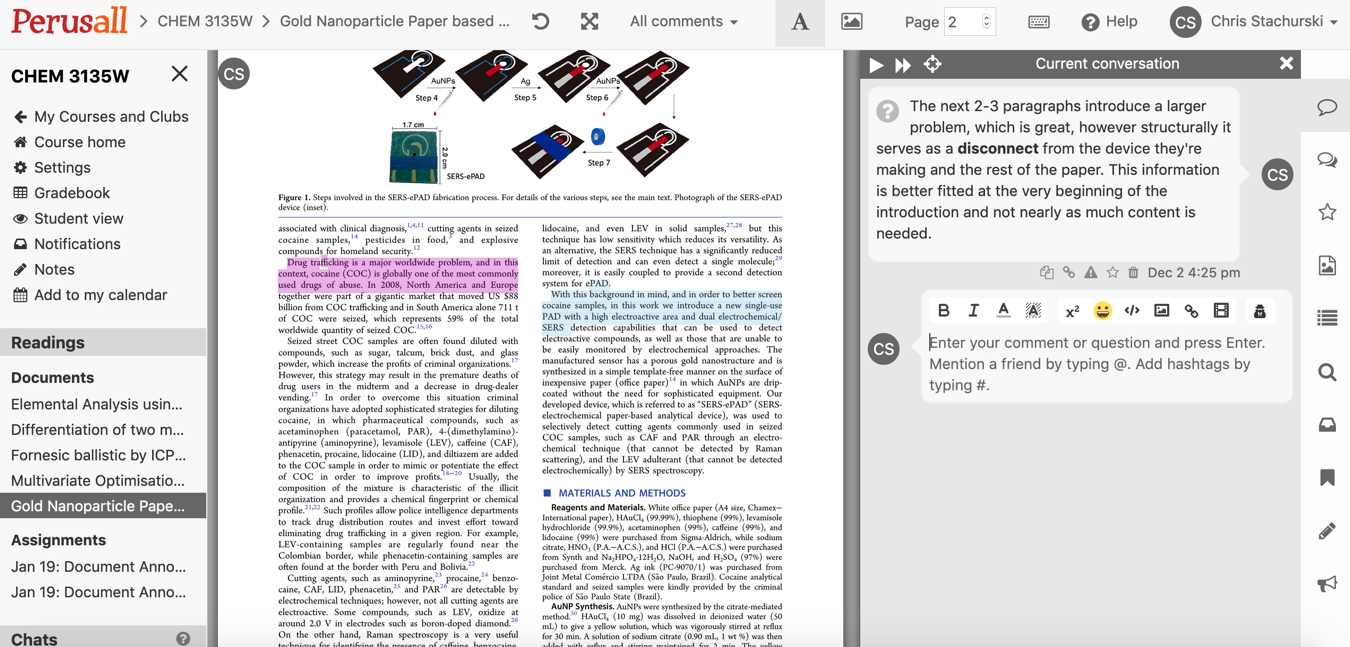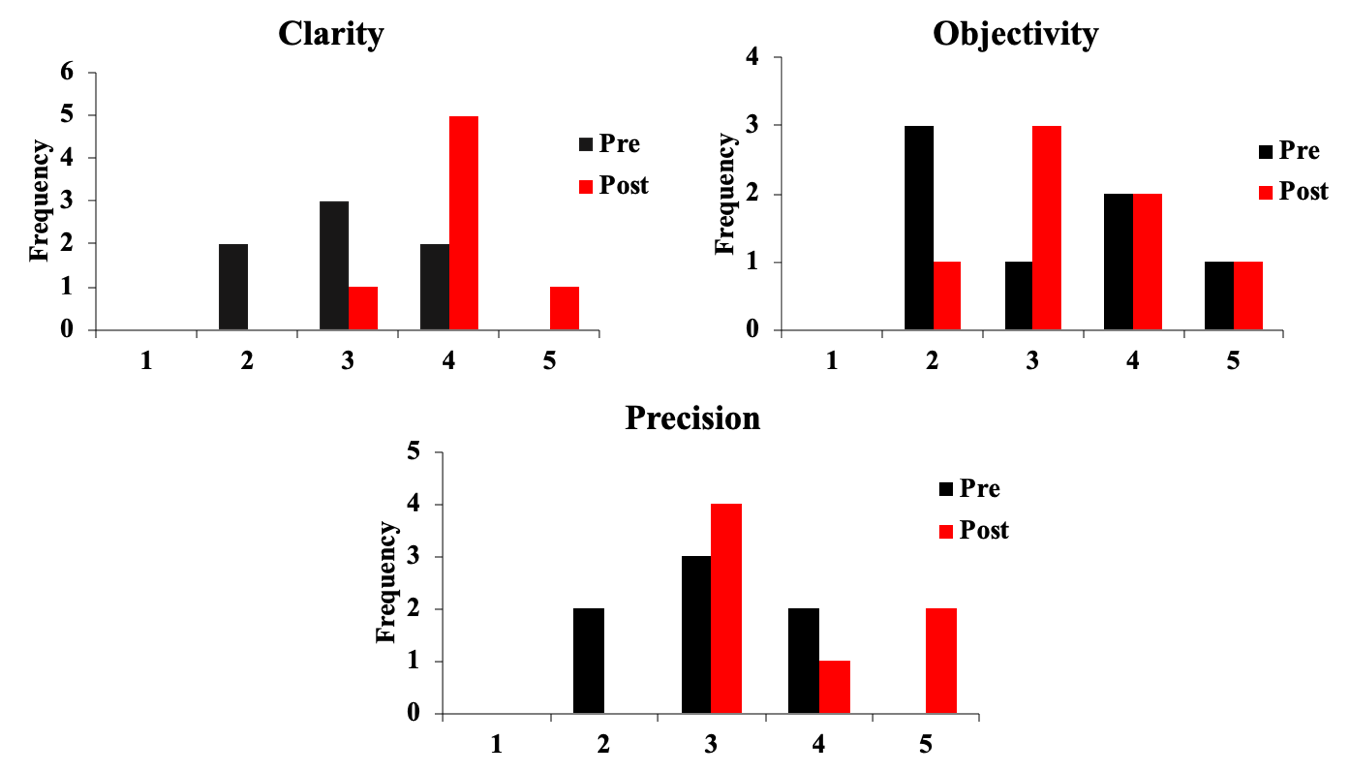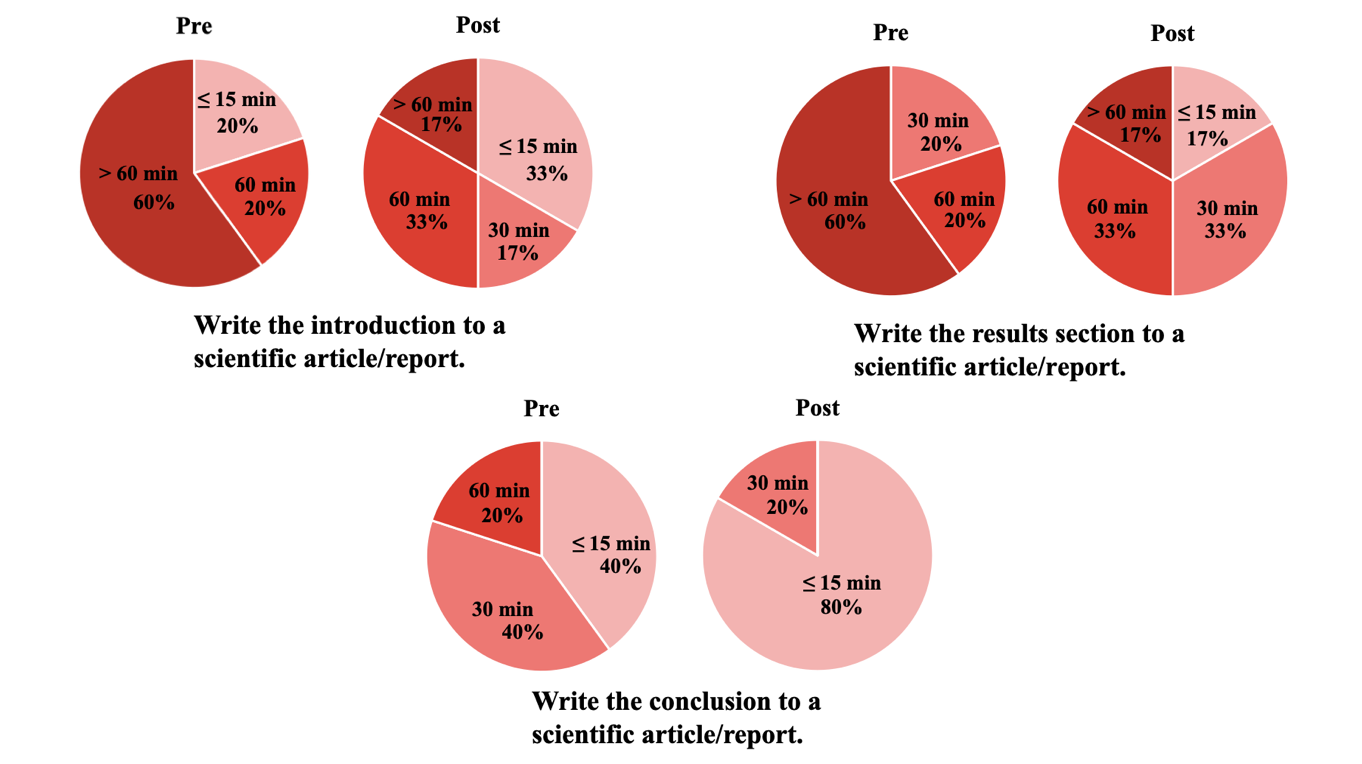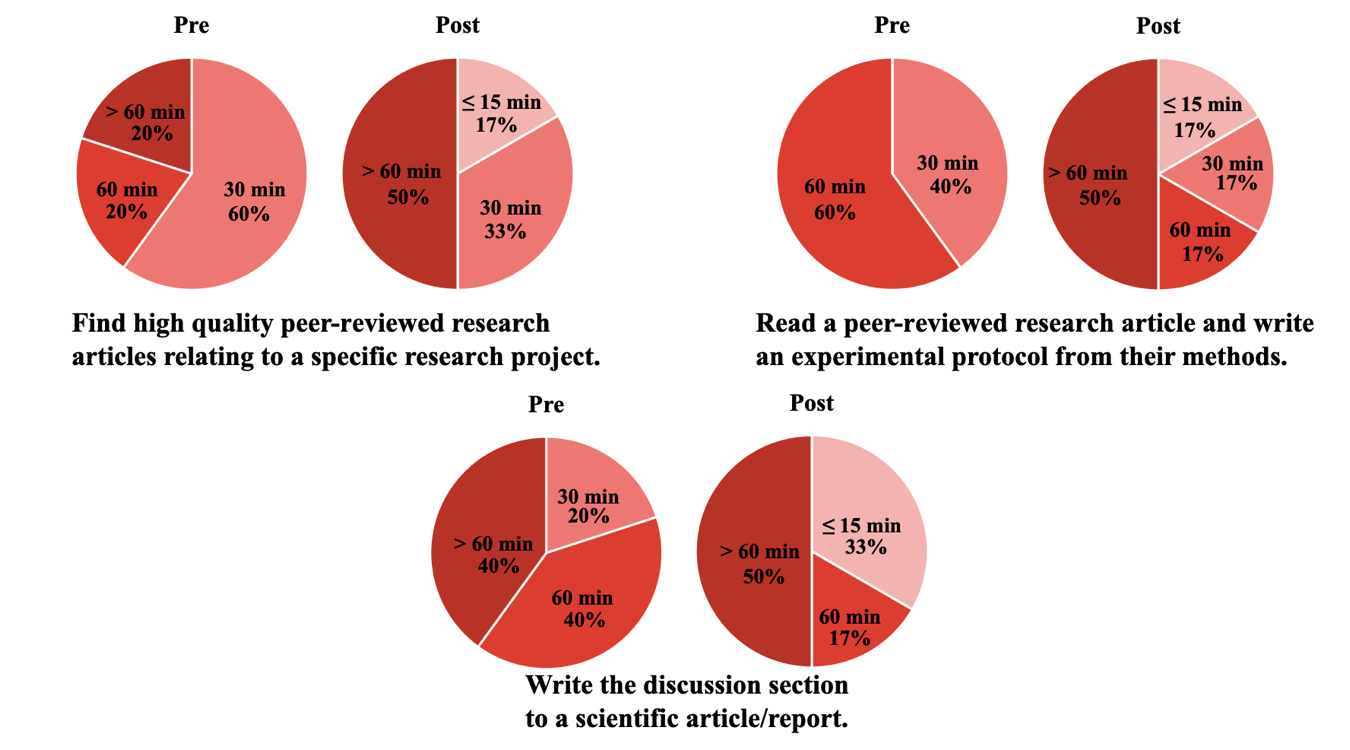Chemistry 3135W: Forensic Analytical Chemistry
 Christopher Stachurski working with
Christopher Stachurski working with
Susan Verberne-Sutton, Senior Lecturer, Chemistry
Overview
For many undergraduate students in STEM fields, scientific writing styles taught in labs and writing courses directly contradict the argumentative writing styles they have traditionally used. In fact, most students only receive indirect instruction in scientific writing in the form of reporting laboratory results in a style mimicking traditional peer-reviewed research articles. This approach to instruction in scientific writing leaves much to be development independently by the student in future academic or career endeavors. Without a clear sense of the purpose of each part of a scientific article, as well as an idea of what constitutes effective scientific communication, it can be easy for students to view these approaches to instruction in scientific writing as procedurally arriving at a final product over communicating scientific results effectively.
This study seeks to help students improve their scientific writing through critical analysis of peer-reviewed literature for qualities such as clarity, effectiveness in communication, and objectivity. In asking students to analyze and evaluate the quality of peer-reviewed literature, higher levels of thought and learning are being called upon according to Bloom’s taxonomy which will hopefully lead to a deeper understanding of the role and expectations of scientific writing (Bloom et. al. 1956). Through this analysis, we hypothesize that students will develop their own sense of effective scientific writing which will better guide their own writing and editing as well as improve their confidence as contributors within their respective fields.
This study looks to investigate a new approach for teaching scientific writing, specifically to junior and senior chemistry undergraduates. Ultimately the approach, if effective, could easily be applied to a number of courses across disciplines in STEM to help overcome a hurdle many students face when learning to write effectively in a scientific manner.
Research Questions
Some of the research questions prompting this study were as follows:
- Does the quality of student’s scientific writing strengthen alongside the development of an opinion on what constitutes effective and ineffective writing?
- Do tasks such as evaluating and analyzing writing help students learn effective scientific writing strategies?
- Will these exercises teach students to be critical of peer-reviewed literature and more careful when selecting articles for use in their own research/assignments?
Module Development
The goal of the designed module is to expose students to select sections of peer-reviewed literature and critique the writing based on quality over content. By reading for quality of writing over content, students can focus on the role of each section of a scientific article and how factors like sentence structure and word choice impact the writer’s ability to communicate their scientific findings to their audience. The three qualities students were instructed to read for were as follows:
- Clarity – is the writing coherent and easy to understand; does it avoid unnecessary detail
- Objectivity – are the writer’s statements and ideas supported by their evidence; is their flow of ideas straightforward
- Precision – does the writer make subjects clear and avoid vague language
The selected tool for content delivery was the online document reader and annotator Perusall (perusall.com). Each week students were asked to read selected portions of predetermined peer-reviewed research articles and answer questions on the effectiveness of each part as well as if the section’s specific role was fulfilled. An example of the Perusall interface and a typical assignment are shown below.
Assignments progressed to where students were critiquing multiple articles and making judgements on which article communicated more effectively while justifying their decision. Students were also asked to perform the same type of writing quality evaluation on articles selected for use in their review article assignment, hopefully encouraging this type of critical approach to all scientific articles students encounter instead of just those used for traditional assignments.
Results
In order to determine if the quality of students writing was impacted by the Perusall reading assignments, writing samples from students pre and post module participation were graded against a predetermined rubric assessing qualities such as clarity, precision, and objectivity. The writing samples, all assigned in the same manner, were collected, deidentified and mixed together prior to grading. Once graded, the assignments were reidentified and sorted into their respective pre and post category. The results of the blind grading are shown in the following histograms:
Across the board, student’s writing samples at the end of the intervention were much clearer, both in language as well as their progression of ideas at the end of the semester. Students were also more focused on the experimental findings and their writing demonstrated an appropriate balance between experimental results and the broader picture.
In addition to graded writing samples, surveys were used to measure changes in student’s perceived confidence, expertise, and time needed towards scientific writing or writing-related tasks. Confidence assessment questions were asked on a 1 to 5 scale (1 being least confident; 5 being most confident) and time related questions, in which students were asked the minimum amount of time needed for a certain task, were assessed on the following scale: ≤15 min, 30 min, 60 min, >60 min
Overall, self-perceived confidence in reading and writing scientific literature increased following participation in the Perusall assignments. (Pre: n = 5; Post: n = 6)
These results suggest that the act of critically analyzing peer-reviewed literature helped students see themselves as participating members to the field, which hopefully strengthens their voice in their own scientific writing. Higher levels of comfort towards these two activities can also promote more efficient learning through future opportunities to create scientific writing.
When asked about the minimum amount of time needed for reading and writing-related tasks, students reported a decrease in the amount of time needed for certain activities such as writing introductions, results, and conclusions to scientific articles or reports. (Pre: n = 5; Post: n = 6)
This decrease in time needed to write reports or articles agrees with the reported increase in confidence towards reading and writing. Following completion of the assignments, students had developed a better idea of the expected role of each part of a scientific article or lab report as well as an idea of how to clearly communicate those sections to an audience.
For other activities, such as finding high quality articles and writing discussion sections to reports or articles, students reported an increase in the minimum time needed to perform the task following completion of the Perusall assignments. (Pre: n = 5; Post: n = 6)
We interpret these results as signifying students being more critical of the articles they encounter in the literature while being more careful to filter out articles in their search. This can both help students increase the quality of articles used in their own research as well as encourage critical evaluation of each article read. Prolonged analysis of scientific writing beyond this course will encourage students to continually improve their own standards for scientific writing helping them continually grow throughout academic settings as well as their professional careers.
Conclusion
Overall students were receptive to the types of critical analysis assignments presented in Perusall which seemed to have a positive effect on confidence and ability towards writing-related activities. Student’s identified that discussing the qualities of effective writing helped them in their own writing throughout the course. Future work of interest would be to investigate the role of critical literature analysis alongside a control section of conventional instruction in scientific writing, in order to fully explore its effects on the writing quality produced by students.
Citations
Bloom, B., Englehart, M. Furst, E., Hill, W., & Krathwohl, D. (1956). Taxonomy of educational objectives: The classification of educational goals. Handbook I: Cognitive domain. New York, Toronto: Longmans, Green.





